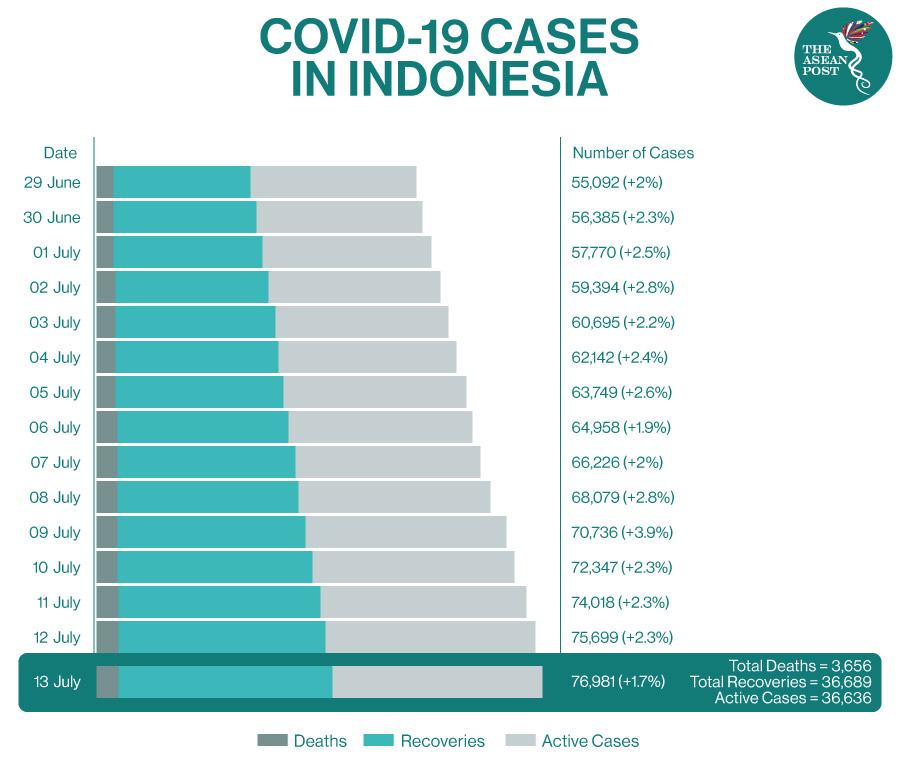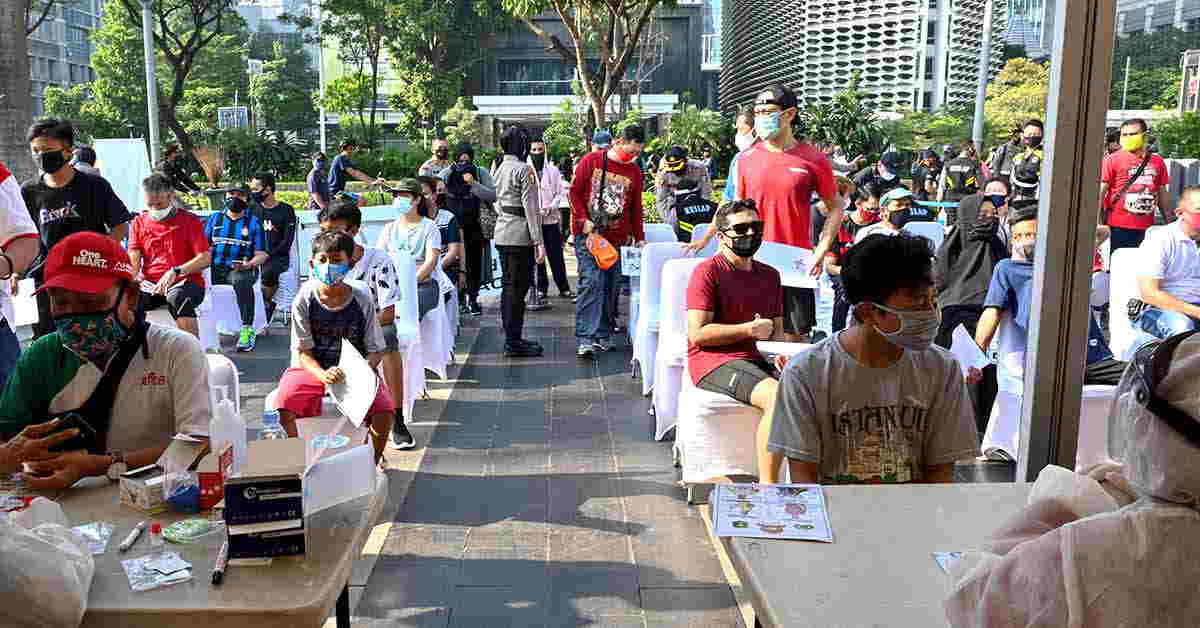ASEAN member state Indonesia, the fourth most populous nation in the world – confirmed its first COVID-19 cases in early March. Since then, the number of infections in the archipelago have soared. The largest increase of new cases in a single day was on 9 July with 2,657 cases reported. To date, over 76,000 coronavirus cases have been recorded in Indonesia – the highest in Southeast Asia. Unfortunately, more than 3,600 people have already succumbed to the virus.
Nevertheless, observers believe that the number of infections and deaths could be higher than officially reported – perhaps due to the lack of testing capacity to detect the deadly virus.
“The true infection and death rates are higher than the officially reported data because our tests are still a very low number compared to the population,” said Dr Iwan Ariawan, an epidemiologist from the University of Indonesia, back in April.
The coronavirus crisis has severely impacted nations worldwide, and Indonesia is no exception. The economic impact is expected to be large and could lead to a global recession. Just today, it was reported that neighbouring Singapore – said to be the richest economy in the region – has entered technical recession as the country’s gross domestic product (GDP) plunged 12.6 percent year on year in the second quarter, as stated by the city-state’s Ministry of Trade and Industry (MTI).
As for Indonesia, Finance Minister Sri Mulyani Indrawati said that the country’s GDP is projected to contract 3.8 percent in the second quarter, and may shrink by a further one percent or grow 1.2 percent in the third quarter. Local media in the country have reported that if the economy shrinks in the third quarter, Indonesia will enter its first recession since the 1998 Asian financial crisis.

The COVID-19 pandemic has caused a rise in unemployment across Asia. It was reported that the government of Indonesia estimates that around 1.1 million to 3.78 million of its citizens will fall into poverty, while 2.9 million to 5.2 million people could lose their jobs.
The Manpower Ministry in the archipelago reported that over 1.2 million people from 74,439 companies have either lost their jobs or have been furloughed as of April.
According to a draft report by the Jakarta-based SMERU Research Institute, an independent institute for research and public policy studies, titled ‘The Impact of COVID-19 Outbreak on Poverty’, the poverty rate in Indonesia is expected to increase from 9.2 percent in September 2019 to 9.7 percent by the end of 2020. However, under the most severe projection, the poverty rate will increase to 12.4 percent – which implies that 8.5 million more people will become poor, according to the research.
Stimulus Packages
“Indonesia’s economic outlook will now depend on the ability to stimulate recovery after a drastic deterioration in economic activity,” said Sri Mulyani. “We will accelerate state spending in the second half to mitigate the impacts of COVID-19,” the finance minister added.
The Indonesian government unveiled the first stimulus package last February worth US$725 million to support the tourism, airline, and property industries during the coronavirus crisis. Other than that, the government also provided extra funding for the Affordable Food Program to aid 15 million low-income households buy staple foods. The program was introduced by President Joko Widodo during his re-election campaign last year.
Some time mid March, the government then issued its second emergency stimulus package valued at US$8 billion. The package provides a range of fiscal and non-fiscal incentives in addition to a special stimulus for small and medium-sized (SMEs) businesses. Some of the fiscal incentives were mainly for the manufacturing industry in the form of tax breaks.
Not long after, the third stimulus package was announced to fund the healthcare system and cash transfers, as reported by local media. Last month, Indonesia unveiled its latest and bigger stimulus package worth US$47.6 billion which aims to “strengthen the healthcare system, direct more spending toward social protection to boost consumption and provide incentives to rescue Indonesian businesses from bankruptcy and workers from layoffs,” as reported in local media.
“This is a thorough stimulus package to support people’s purchasing power and businesses,” explained the country’s finance minister. “We are hoping that this stimulus can maintain our economic growth at above zero percent.”
Nevertheless, Sri Mulyani recently said that the stimulus spending was still slow to take effect, citing administrative issues that are hampering the government’s efforts to disburse virus funds swiftly.
Piter Abdullah, research director at the Center of Reform on Economics (CORE), an economic think tank urged the government to move promptly in disbursing its promised fiscal incentives in order to revive the economy.
"We cannot avoid a recession but we still can avoid an economic crisis in which a huge number of businesses go bankrupt," he told local media.
Related Articles:
